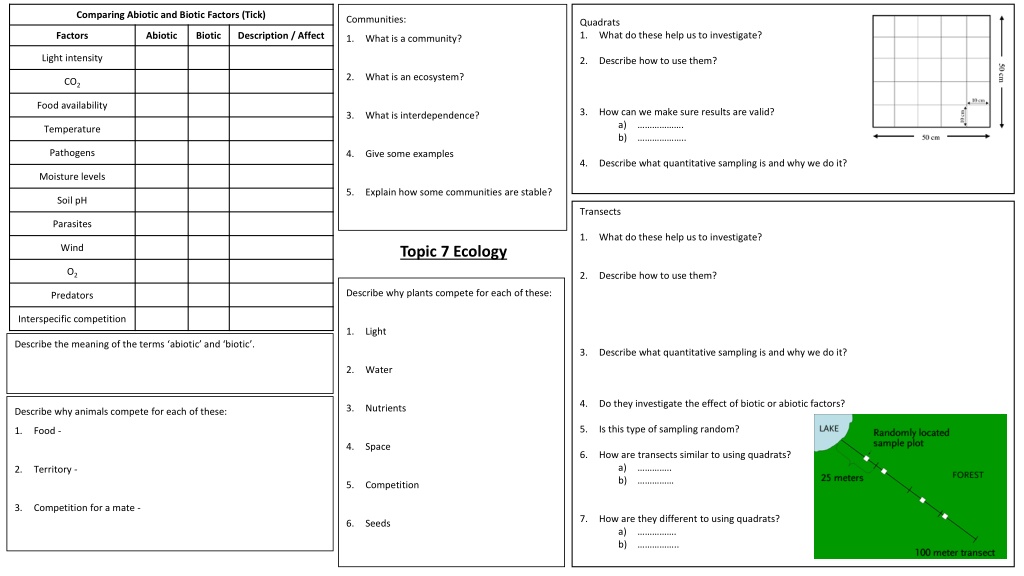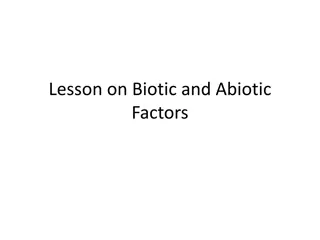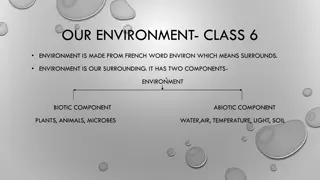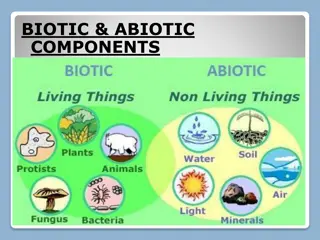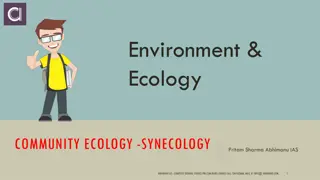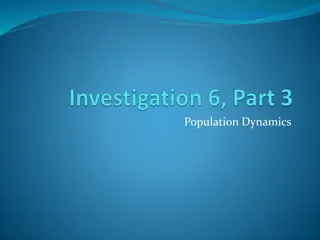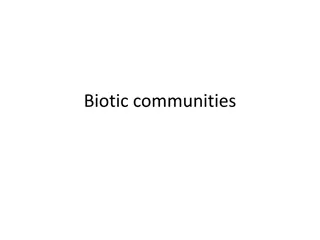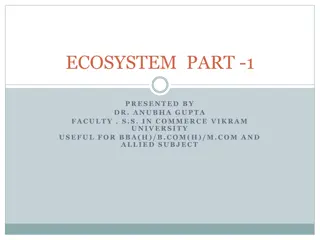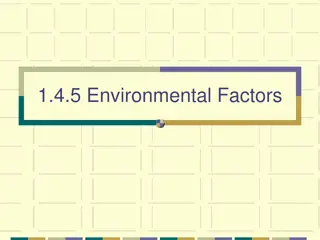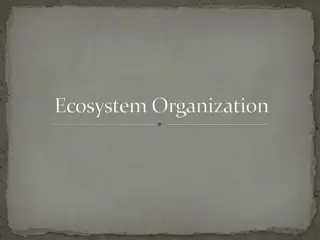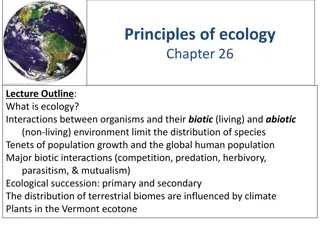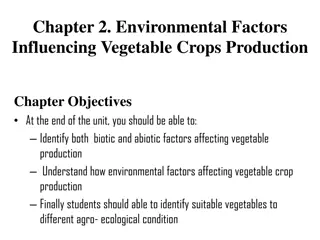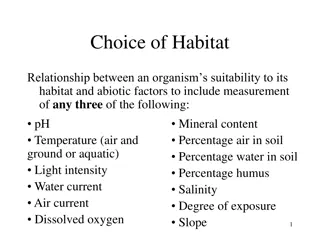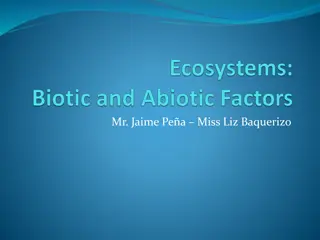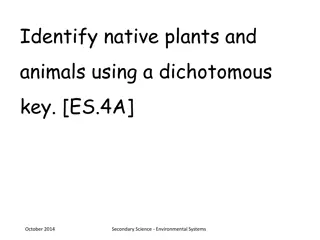Exploring Abiotic and Biotic Factors in Communities
Investigating abiotic and biotic factors in communities through quadrats helps study interactions like light intensity, CO2 levels, food availability, and more. It ensures validity by considering interdependence, competition, and sampling techniques like transects. Examining adaptations in animals and plants, materials cycling, and managing biodiversity and waste are key topics covered.
Download Presentation

Please find below an Image/Link to download the presentation.
The content on the website is provided AS IS for your information and personal use only. It may not be sold, licensed, or shared on other websites without obtaining consent from the author. Download presentation by click this link. If you encounter any issues during the download, it is possible that the publisher has removed the file from their server.
E N D
Presentation Transcript
Comparing Abiotic and Biotic Factors (Tick) Communities: Quadrats 1. What do these help us to investigate? Factors Abiotic Biotic Description / Affect 1. What is a community? Light intensity 2. Describe how to use them? 2. What is an ecosystem? CO2 Food availability 3. How can we make sure results are valid? a) . b) .. 3. What is interdependence? Temperature Pathogens 4. Give some examples 4. Describe what quantitative sampling is and why we do it? Moisture levels 5. Explain how some communities are stable? Soil pH Transects Parasites 1. What do these help us to investigate? Wind Topic 7 Ecology O2 2. Describe how to use them? Describe why plants compete for each of these: Predators Interspecific competition 1. Light Describe the meaning of the terms abiotic and biotic . 3. Describe what quantitative sampling is and why we do it? 2. Water 4. Do they investigate the effect of biotic or abiotic factors? 3. Nutrients Describe why animals compete for each of these: 5. Is this type of sampling random? 1. Food - 4. Space 6. How are transects similar to using quadrats? a) .. b) 2. Territory - 5. Competition 3. Competition for a mate - 7. How are they different to using quadrats? a) . b) .. 6. Seeds
Comparing adaptations in animals and plants What are extremophiles? Define these: Environmental condition Explanation of animal adaptation Explanation of plant adaptation 1. Predator Animal Plant 2. Prey 3. Primary consumer What conditions are considered 4. Secondary consumer High salt extreme? In stable communities, why do the numbers of predators/prey rise and fall in cycles? Extreme cold Only active early morning and late night. Marram Grass curls leaves to reduce surface area Reduces water loss Cooler conditions What does biodiversity mean? Extreme high temperatures Fewer stomata in stem than leaves so reduces water loss Adapted kidneys. Less water loss. Butcher broom grows flowers from the stem 4 ways human population growth has affected land and resources. 1. 2. Dry climate 3. 4. Why is managing waste such a problem on the planet? Collecting water Discuss the different ways we can manage biodiversity: Breeding programs Storing water Rare habitats Field margins and hedgerows Reduce deforestation Camouflage Recycling resources
Materials Cycling Cycle Take in the material Releasing the material Feeding Decomposition Decay Death Photosynthesis Excretion - Precipitation Condensation Water Evaporation Transpiration Respiration Decomposition Feeding Respiration Carbon Photosynthesis - Combustion Death Effects of pollution Global warming 1. Why are CO2 conditions changing and why is this a problem to the planet? Pollution Type Problems it causes Land 2. Describe what the greenhouse effect is and how it happens. Water 3. State the two main problems to our planet associated with global warming. a) . Air b) . 4. Explain why these biological consequences will happen as a result of global warming; a) Loss of habitat Deforestation b) Changes in distribution Peat bog destruction c) Changes in migration patterns d) Reduced biodiversity
(BIOLOGY ONLY) Making food production efficient and sustainable (BIOLOGY ONLY) Rates of Decomposition How to make it efficient How to make it sustainable List the conditions needed for decay and describe why they are needed: 1. 2. 3. Managing the oceans Food chains in food production Why is decay important in recycling? Compost The role of biotechnology Artificially managed food production Methane produced Biogas generators Fertilisers Tackling the problem of overfishing Farming Farming fish (BIOLOGY ONLY) Trophic levels and biomass (BIOLOGY ONLY) Explain the transfer in biomass for these examples. (BIOLOGY ONLY) Factors affecting food security: 1. What is the order of the different trophic levels? 1. Faeces 1. An increasing birth rate 2. Changing diets in developed countries 3. New pests and pathogens 2. Waste 2. How is biomass measured? 4. Environment changes 5. Cost of agricultural inputs 3. What happens to the amount of biomass as you progress through a food chain? 3. Constant body temperature 6. Conflicts What are the suggestions for a sustainable future? - Soil quality - Efficient ways to produce food - Fish stocks 4. Why? 4. Decomposers
